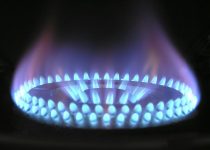Estimating the Cost of Building a Grill Island
Estimating the cost of building a grill island typically ranges from $3,000 to $15,000. Costs depend on materials, appliances, and labor. You'll need to factor in options like concrete or stone for the base, various grill types, and possible plumbing or electrical work. Labor rates can vary significantly. Prioritizing your needs will help you stay within budget. Keep exploring to uncover essential tips and advice for your grill island project.
Table of Contents
Key Takeaways
- Determine your budget by estimating costs for materials, appliances, and labor, including a 10-15% contingency for unexpected expenses.
- Choose durable materials like concrete, stone, or steel, which vary significantly in price and longevity.
- Factor in the costs of appliances, ensuring to include installation and maintenance expenses for grills and additional features.
- Account for labor fees, which vary by trade; electricians, plumbers, and stonework installers typically charge between $20 to $100 per hour.
- Don't overlook additional costs such as permits, utilities, and landscaping that may impact your overall budget.
Understanding the Basics of Grill Island Construction
When you decide to build a grill island, understanding the fundamentals of its construction is crucial. Start by determining the layout and design that suits your outdoor space. Think about the size, shape, and placement of your grill, as well as additional features like countertops and storage.
Choosing a solid base is essential; many opt for concrete or a sturdy frame to ensure stability. You'll also want to consider the countertop material, which should withstand heat and weather conditions.
Don't forget about plumbing and electrical needs if you plan to add a sink or lighting. Finally, always prioritize safety by ensuring your grill is properly ventilated and built according to local codes.
Material Costs for Your Grill Island
As you dive into the material costs for your grill island, it's important to consider various components that can significantly impact your budget.
First, think about the framing materials. Steel or aluminum offers durability but can be pricier than wood.
Next, the countertop material is crucial; options range from budget-friendly concrete to high-end granite.
Don't forget about the finish; tiles and stone can elevate aesthetics but add to costs.
Additionally, consider the base material for your island, which can vary in price based on your choice.
Lastly, remember to factor in any necessary fasteners and structural supports.
Carefully selecting materials will help you manage costs while ensuring your grill island stands the test of time.
Appliance Selection and Expenses
When it comes to building your grill island, choosing the right appliances is crucial for maximizing your outdoor cooking experience.
You'll want to consider different grill types, their features, and any additional appliances that can enhance your setup.
Don't forget to factor in installation and maintenance costs, as these can significantly affect your overall budget.
Grill Types and Features
Choosing the right grill isn't just about cooking; it significantly impacts your budget and the overall design of your grill island.
Understanding the types and features available will help you make an informed decision. Here are four key factors to consider:
- Type of Fuel: Decide between gas, charcoal, or electric grills based on your cooking style and flavor preferences.
- Size: Ensure the grill fits your space while providing enough cooking area for your gatherings.
- Material Quality: Opt for durable materials that can withstand outdoor elements and ensure longevity.
- Additional Features: Look for features like side burners, rotisserie kits, or storage options, which can enhance your grilling experience.
Invest wisely, and your grill island won't only serve as a cooking space but also as a stunning centerpiece.
Additional Appliance Options
Creating a well-equipped grill island often involves selecting a variety of additional appliances that enhance your outdoor cooking experience.
Consider incorporating a refrigerator to keep drinks and ingredients cool, making your gatherings more convenient. A sink is also a practical addition for easy clean-up and food prep.
If you love pizza, think about adding a pizza oven for authentic, wood-fired flavors. You might also want a side burner for sauces and sides, or even a smoker for that rich, smoky taste.
When you choose these appliances, remember to factor in their costs, as they can significantly affect your overall budget. Prioritize your favorites based on your cooking style and how often you entertain outdoors.
Installation and Maintenance Costs
Although selecting high-quality appliances is essential for your grill island, understanding installation and maintenance costs is equally important.
These costs can add up quickly, so you need to be prepared. Here are some key factors to consider:
- Installation Fees: Hiring professionals for gas connections, electrical work, or plumbing can range from $200 to $1,000.
- Maintenance Supplies: Cleaning products and tools will typically cost around $50 to $100 annually.
- Warranty Costs: Extended warranties can add $100 to $300 to your overall budget.
- Repair Expenses: Setting aside $150 to $500 yearly for unexpected repairs is wise.
Labor Costs and Installation Fees
When planning your grill island, understanding labor costs and installation fees is crucial for budgeting accurately. Labor costs can vary based on your location and the complexity of your project. Hiring experienced professionals ensures quality work but might come at a premium.
Here's a breakdown of typical labor costs:
| Task | Estimated Cost per Hour | Total Hours Required |
|---|---|---|
| General Labor | $20 – $30 | 10 – 20 |
| Electrician | $50 – $100 | 2 – 4 |
| Plumber | $45 – $80 | 2 – 4 |
| Stonework Installation | $30 – $50 | 8 – 16 |
Design Considerations and Customization Options
Designing your grill island isn't just about aesthetics; it's also about functionality and how well it fits your outdoor space.
To ensure you create an inviting and efficient area, consider the following design elements:
- Layout: Think about the flow of movement and accessibility for ease of use.
- Material: Choose durable materials that can withstand the elements while matching your home's style.
- Appliances: Decide which appliances you want to include, like a grill, sink, or refrigerator, to enhance your cooking experience.
- Seating: Incorporate comfortable seating options to encourage social gatherings and relaxation.
Budgeting Tips for Your Grill Island Project
When planning your grill island project, start by determining your budget to keep your spending in check.
Next, prioritize the essential features that matter most to you, ensuring you get the best value.
Finally, compare material costs to find options that fit your aesthetic and financial needs.
Determine Your Budget
Setting a budget for your grill island project is crucial, and it helps to start by identifying how much you're willing to spend.
To make the budgeting process easier, consider these four tips:
- Research Costs: Look into materials, appliances, and labor costs to get a realistic estimate.
- Factor in Extras: Don't forget about permits, utilities, and landscaping; these can add up quickly.
- Set a Contingency: Allocate around 10-15% of your budget for unexpected expenses that may arise during construction.
- Stick to Your Budget: Keep track of your spending and adjust as needed to ensure you don't overspend.
Following these steps will help you create a budget that aligns with your vision for your grill island.
Prioritize Essential Features
After establishing your budget, it's time to focus on the features that matter most for your grill island.
Start by identifying your cooking needs—do you grill frequently or host large gatherings? Prioritize a high-quality grill that fits your cooking style.
Next, consider essential components like storage space for utensils and ingredients, as well as a countertop for prep work. You might want to include a sink, which can make cooking and cleanup easier.
Don't forget about seating; a few bar stools can create a cozy atmosphere.
Finally, think about lighting and electrical outlets for convenience.
Compare Material Costs
As you plan your grill island, comparing material costs can significantly impact your overall budget.
Different materials come with varying price tags, so it's essential to evaluate your options carefully.
Here's a quick list to help you compare:
- Concrete: Durable and customizable, but can be pricey.
- Stone: Offers a natural look, yet costs can add up based on the type.
- Brick: A classic choice, often affordable, but labor costs might increase.
- Steel: Lightweight and modern, though it may require maintenance.
Frequently Asked Questions
What Size Grill Island Is Best for My Outdoor Space?
To determine the best size grill island for your outdoor space, consider your available area, how many people you typically entertain, and the features you want. A well-planned size enhances both functionality and aesthetics.
How Long Does It Take to Build a Grill Island?
Building a grill island typically takes anywhere from a few days to a couple of weeks, depending on the complexity and materials used. You'll want to plan ahead for any potential delays or weather issues.
Can I Build a Grill Island Myself?
Yes, you can build a grill island yourself! With some planning, basic tools, and materials, you'll create a functional space. Just make sure to follow safety guidelines and take your time for the best results.
What Permits Are Needed for Grill Island Construction?
You'll likely need a building permit, especially if your grill island involves electrical or plumbing work. Check local regulations to ensure you've covered all requirements, and consider any zoning laws that might apply to your project.
How Do I Maintain My Grill Island?
To maintain your grill island, regularly clean the grill grates, inspect for rust or damage, and apply protective coatings. Keep surrounding surfaces tidy and ensure proper drainage to prevent water damage and enhance longevity.



